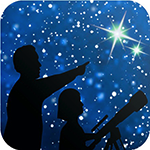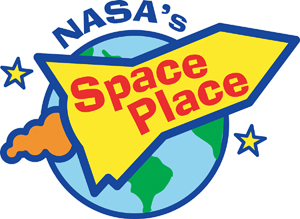Most of the planets in our solar system are bright and easily spotted in our night skies. The exceptions are the ice giant planets: Uranus and Neptune. These worlds are so distant and dim that binoculars or telescopes are almost always needed to see them. A great time to search for Uranus is during its opposition on October 28, since the planet is up almost the entire night and at its brightest for the year.
Category Archives: NASA Space Place
Chill Out: Spot an Ice Giant in August
Is the summer heat getting to you? Cool off overnight while spotting one of the solar system’s ice giants: Neptune! It’s the perfect way to commemorate the 30th anniversary of Voyager 2’s flyby.
Observe the Moon and Beyond: Apollo 11 at 50
Saturn is at opposition this month, beckoning to future explorers with its beautiful rings and varied, mysterious moons. The Moon prominently passes Saturn mid-month, just in time for the 50th anniversary of Apollo 11!
Jupiter Shines in June
Jupiter stakes its claim as the king of the planets in June, shining bright all night. Saturn trails behind Jupiter, and the Moon passes by both planets mid-month. Mercury puts on its best evening appearance in 2019 late in the month, outshining nearby Mars at sunset.
Watching the Late Spring Skies
Late spring brings warmer nights, making it more comfortable to observe a good showing of the Eta Aquarids meteor shower. Skywatchers can also look for the delicate Coma Star Cluster, and spot the Moon on the anniversary of Apollo 10’s “test run” prior to the Moon landing in 1969.
Mars the Wanderer
April’s skies find Mars traveling between star clusters after sunset, and a great gathering of planets just before sunrise.
Hexagon at Night, Quartet in the Morning

By David Prosper
NASA JPL
The stars that make up the Winter Hexagon asterism are some of the brightest in the night sky and February evenings are a great time to enjoy their sparkly splendor. The Winter Hexagon is so large in size that the six stars that make up its points are also the brightest members of six different constellations, making the Hexagon a great starting point for learning the winter sky. Find the Hexagon by looking southeast after sunset and finding the bright red star that forms the “left shoulder” of the constellation Orion: Betelgeuse. You can think of Betelgeuse as the center of a large irregular clock, with the Winter Hexagon stars as the clock’s hour numbers. Move diagonally across Orion to spot its “right foot,” the bright star Rigel. Now move clockwise from Rigel to the brightest star in the night sky: Sirius in Canis Major. Continue ticking along clockwise to Procyon in Canis Minor and then towards Pollux, the brighter of the Gemini twins. Keep moving around the circuit to find Capella in Auriga, and finish at orange Aldebaran, the “eye” of the V-shaped face of Taurus the Bull.
Continue readingJanuary’s Evening Eclipse and Morning Conjunctions

By David Prosper
Observers in the Americas are treated to an evening total lunar eclipse this month. Early risers can spot some striking morning conjunctions between Venus, Jupiter, and the Moon late in January.
Continue readingNovember’s Dance of the Planets
By Jane Houston Jones and David Prosper
NASA JPL
November’s crisp autumn skies bring great views of our planetary neighbors. The Moon pairs up with Saturn and Mars in the evenings, and mornings feature eye-catching arrangements with dazzling Venus. Stargazers wanting a challenge can observe a notable opposition by asteroid 3 Juno on the 17th and watch for a few bright Leonid meteors.
